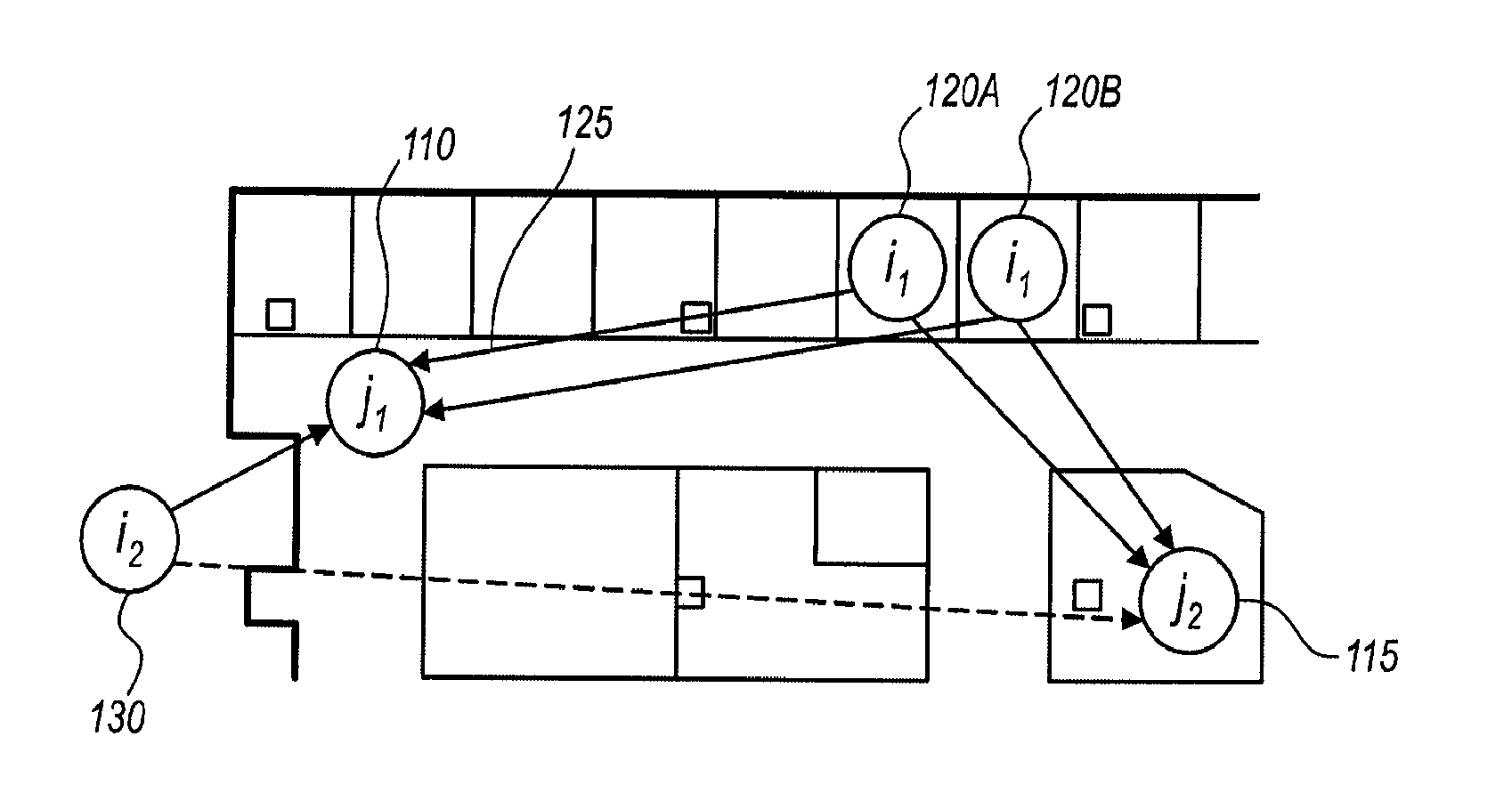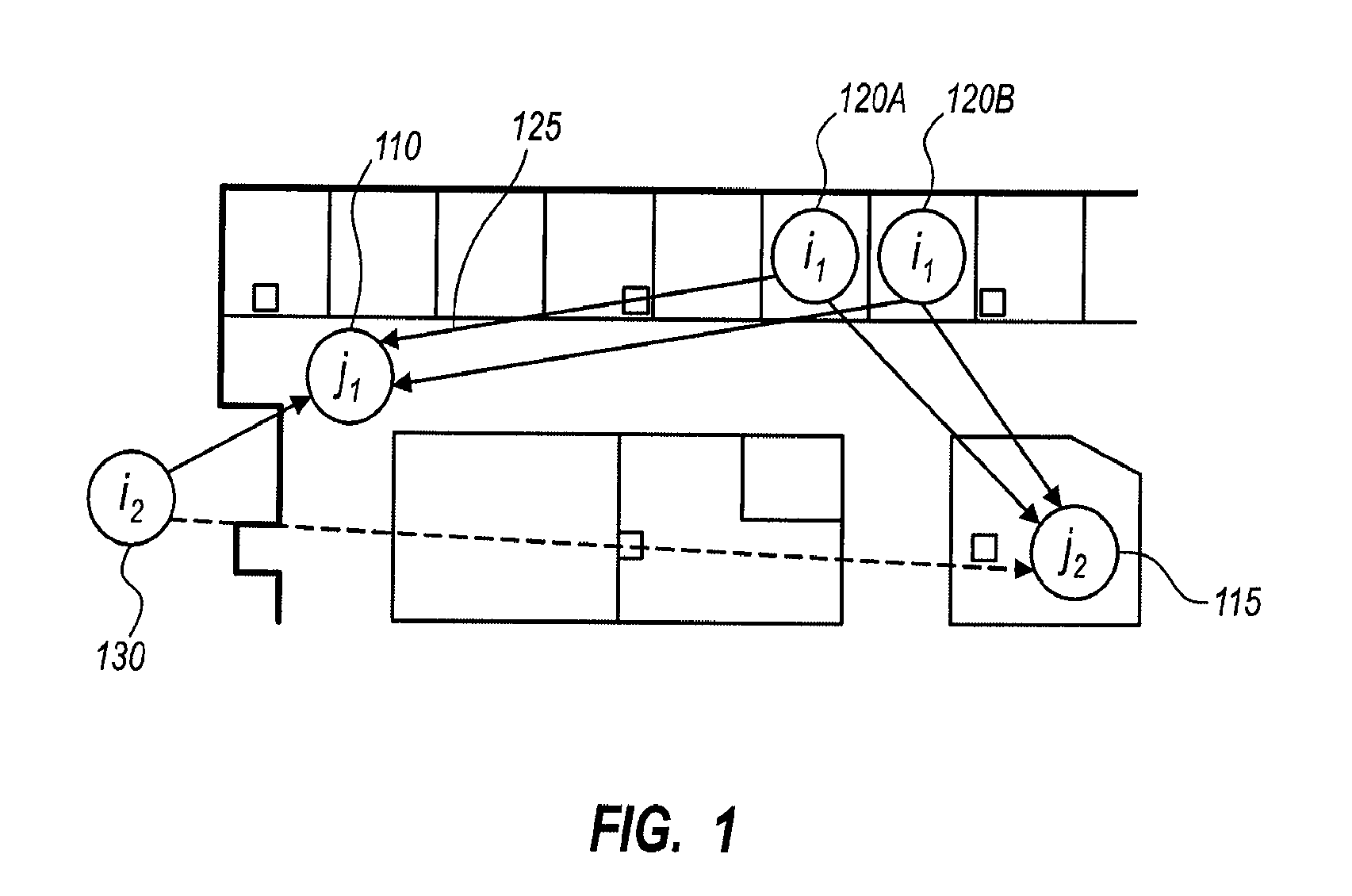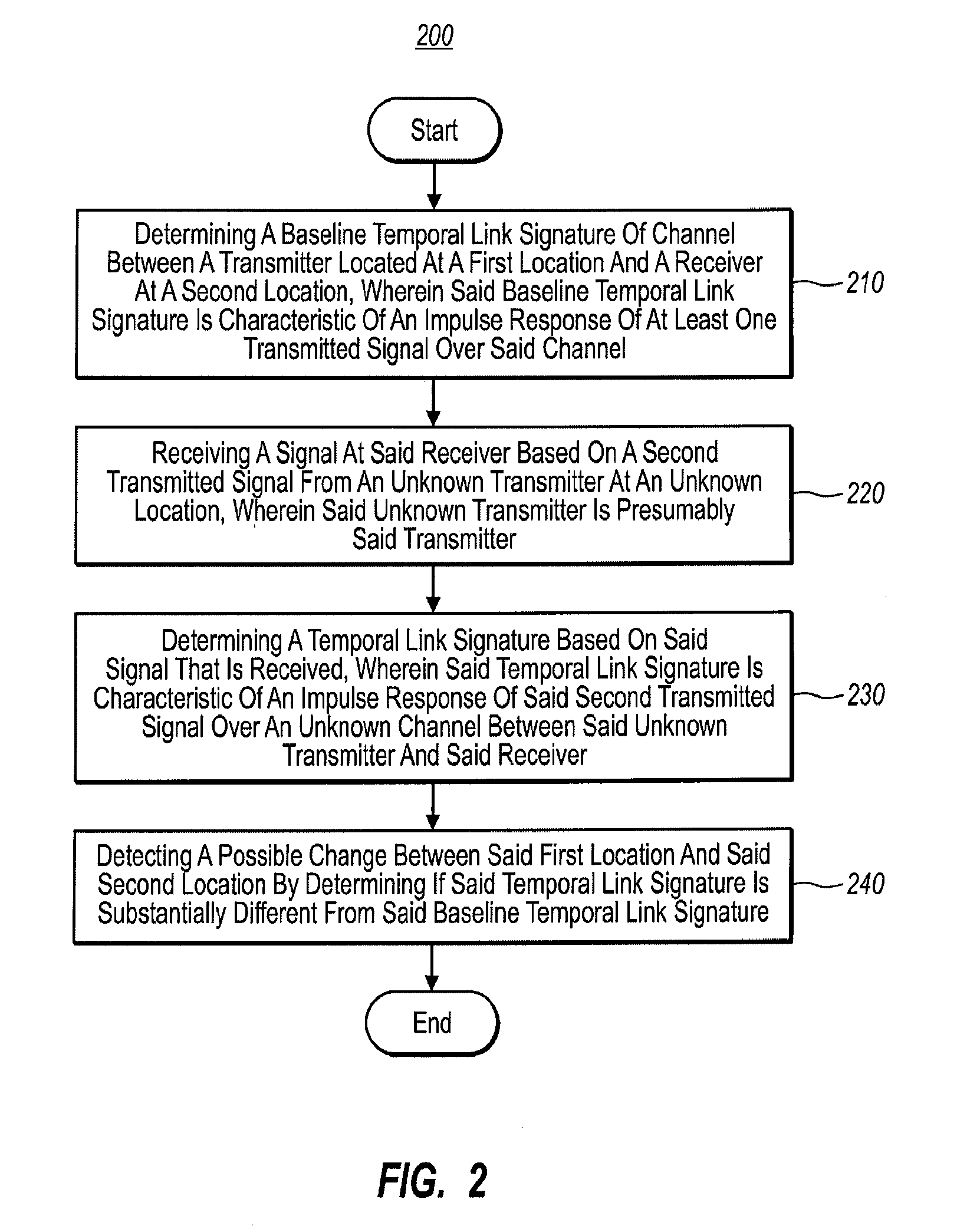Robust Location Distinction Using Temporal Link Signatures
a temporal link and location distinction technology, applied in the field of wireless networks, can solve the problems of ineffective unable to achieve and unable to achieve the effect of efficient and robust use of existing techniques
- Summary
- Abstract
- Description
- Claims
- Application Information
AI Technical Summary
Problems solved by technology
Method used
Image
Examples
Embodiment Construction
[0022]Reference will now be made in detail to the preferred embodiments of the present invention, a method and system for performing location distinction in a wireless network for purposes of detecting a change in transmitter or receiver location, or a combination of both. While the invention will be described in conjunction with the preferred embodiments, it will be understood that they are not intended to limit the invention to these embodiments. On the contrary, the invention is intended to cover alternatives, modifications and equivalents which may be included within the spirit and scope of the invention as defined by the appended claims.
[0023]Accordingly, embodiments of the present invention provide for a robust location distinction mechanism that uses a physical layer characteristic of the radio channel between a transmitter and a receiver, that comprises a temporal link signature. The temporal link signature is the sum of the effects of the multiple paths from the transmitter...
PUM
 Login to View More
Login to View More Abstract
Description
Claims
Application Information
 Login to View More
Login to View More - R&D
- Intellectual Property
- Life Sciences
- Materials
- Tech Scout
- Unparalleled Data Quality
- Higher Quality Content
- 60% Fewer Hallucinations
Browse by: Latest US Patents, China's latest patents, Technical Efficacy Thesaurus, Application Domain, Technology Topic, Popular Technical Reports.
© 2025 PatSnap. All rights reserved.Legal|Privacy policy|Modern Slavery Act Transparency Statement|Sitemap|About US| Contact US: help@patsnap.com



